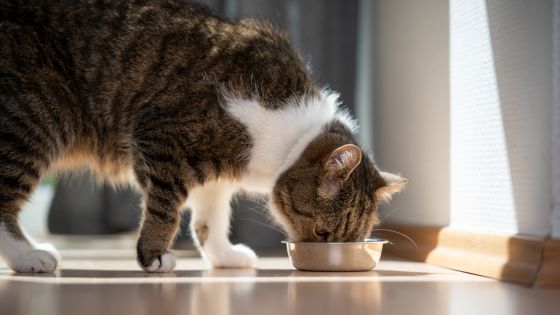Switching your cat’s diet is an important decision that can impact their health and well-being. If you’ve decided to transition to grain free cat food, it’s essential to do so gradually and carefully. In this article, you can gain valuable tips to ensure a smooth and successful transition.
Why Transition?
These food items have gained popularity due to the belief that it better aligns with your feline friend’s natural dietary needs. Their digestive systems are optimised to process animal-based proteins. The kitten meal typically avoids common grains like wheat, corn, and soy, which some of them may have difficulty digesting. By transitioning, you may provide them with a nutritionally balanced meal that suits their carnivorous nature.
Tips To Consider:
Gradual Transition: When switching, it’s crucial to introduce the new food gradually. Sudden dietary changes can result in digestive upset, such as diarrhoea or vomiting. Mix a small portion of the new one with their current meal. Over the course of a week or two, gradually increase the amount while decreasing the old meal. This gradual transition allows their digestive system to adapt to the new diet without causing any distress.
Monitor Your Pet’s Reaction: During the transition process, keep a close eye on their behaviour, appetite, and overall well-being. Some may experience temporary changes in stool consistency or appetite as their bodies adjust to the new diet. If you notice any significant changes or concerns, consult your veterinarian. They can provide guidance and ensure there are no underlying health issues causing the changes.
Consider Palatability and Texture: Pets can be notoriously picky eaters, so it’s essential to consider the palatability and texture of the new meal. Some may need time to adjust to the taste and texture. Experiment with different flavours and textures to find the one that suits their preferences. Adding warm water or a small amount of canned food to the kibble can enhance palatability and make the transition more appealing.
Consult with Your Veterinarian: Every pet is unique, and individual dietary needs may vary. Before making any significant changes to their diet, consult with your veterinarian. They can evaluate their health, discuss the benefits of their new diet, and provide personalised recommendations. They may also recommend specific brands that meet the nutritional needs of their age, breed, and any particular health concerns.
Mix in Familiar Scents or Flavors: If they are particularly hesitant about the new meal, you can try enhancing its appeal by mixing in familiar scents or flavours. For instance, you can sprinkle a small amount of the old meal on top of the new one to create a familiar aroma. It can help entice them to try the new one and make the transition more enticing.
Stay Consistent and Patient: Transitioning to a grain-free diet requires patience and consistency. Cats can be creatures of habit, and sudden changes may lead to resistance. Stick to the plan and avoid switching back and forth between the old and new meals too frequently. It may take a few weeks for them to fully adapt to the new diet, so be patient and persistent.
Monitor Weight and Adjust Portion Sizes: This meal often contains higher protein levels, which can be beneficial for your feline companion. However, it’s essential to monitor their weight during the transition. If you notice weight gain or loss, consult with your vet to adjust the portion sizes accordingly. Your veterinarian can guide your pet on the appropriate amount of food to feed based on age, activity level, and overall health.
Conclusion:
Transitioning to grain free cat food can be a positive step towards providing a diet that better aligns with their natural needs. Following these tips and gradually introducing the new diet can help ensure a smooth and successful transition. Remember to monitor their response and consult your veterinarian for guidance throughout the process. You can help your feline companion thrive on a grain-free diet with patience and proper care.




















